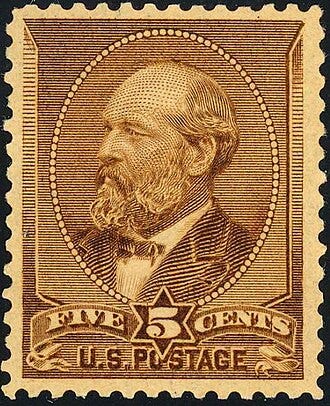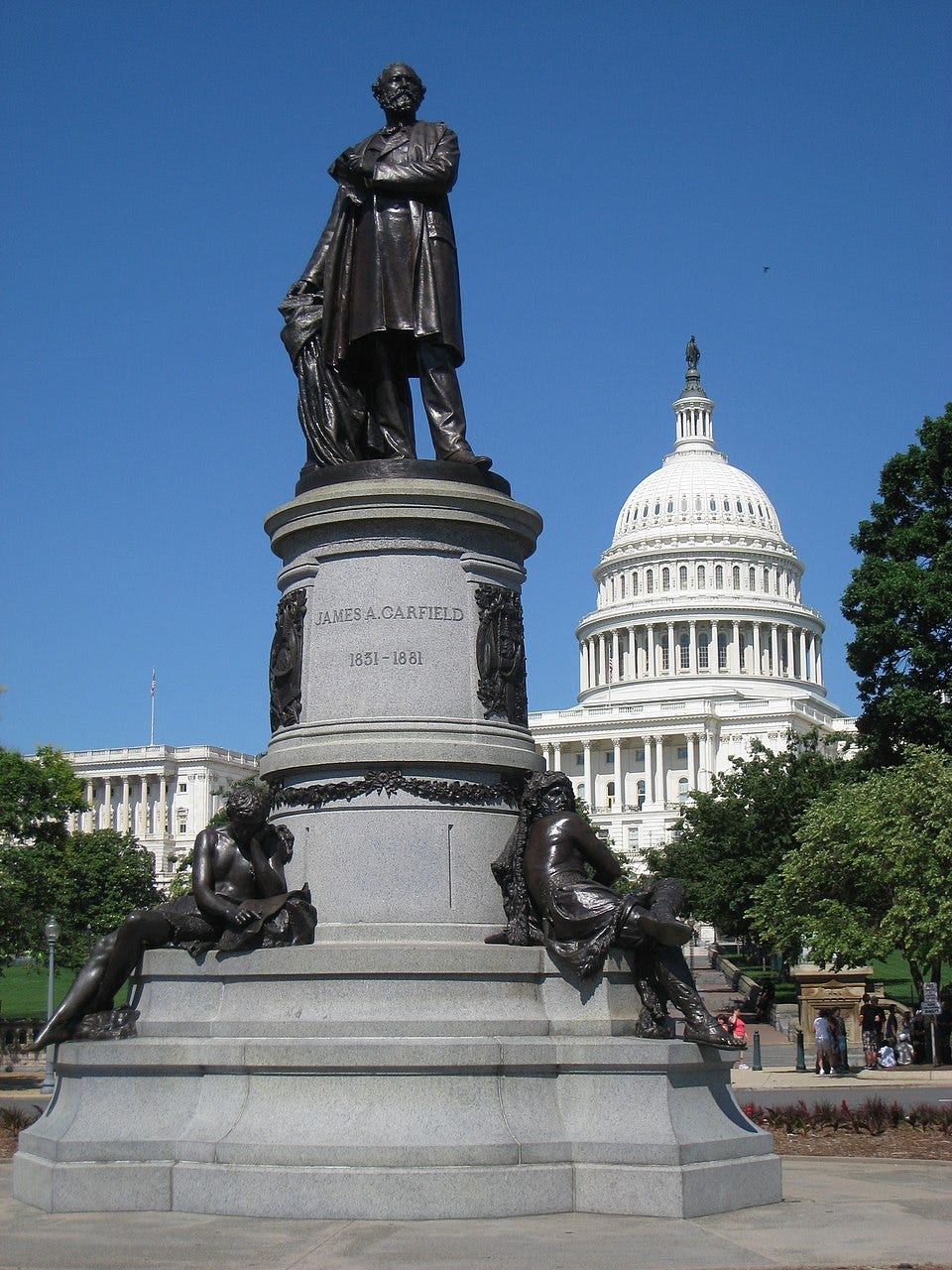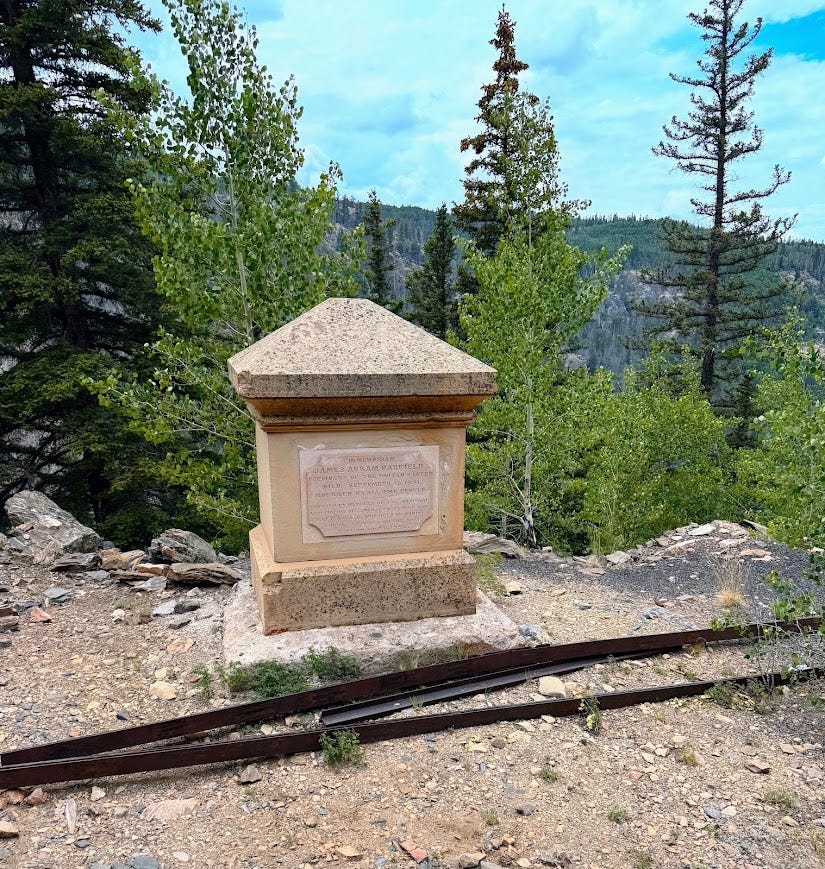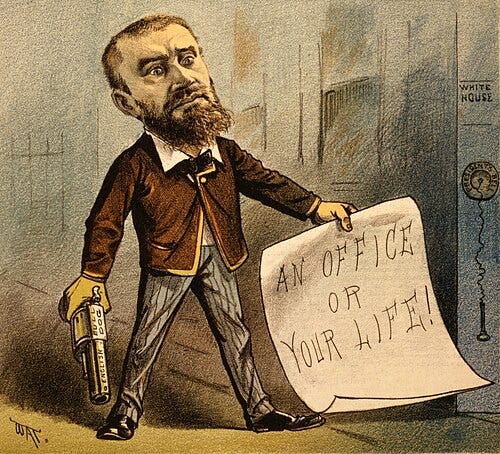Another Dead President: James A. Garfield shot by frustrated office seeker
A little known memorial on the edge of Toltec Gorge in New Mexico
James A. Garfield (1831 – 1881) was U.S. President from March 1881 until his death in September 1881 after being shot two months earlier. A preacher, lawyer, and Civil War general, Garfield served nine terms in the United States House of Representatives and had been elected to the U.S. Senate by the Ohio General Assembly—a position he declined when he became president-elect.1
Garfield opposed Confederate secession, was a major general in the Union Army during the American Civil War, and fought in the battles of Middle Creek, Shiloh, and Chickamauga.
Assassination
On July 2, 1881, Garfield was shot at the Baltimore and Potomac Railroad Station in Washington, D.C., resulting in his death in Elberon, New Jersey, September 19, 1881. The shooting was by frustrated office seeker, Charles J. Guiteau, who was convicted of Garfield's murder and executed by hanging one year after the shooting.2
Memorials

Memorials to Garfield were erected across the country including a postage stamp in his honor.

The sculptural monument to President James A. Garfield was created by John Quincy Adams Ward, cast by The Henry-Bonnard Co. , with a pedestal designed by Richard Morris Hunt.3
One less known memorial is at the top of this essay— the Garfield Monument in Rio Arriba County, New Mexico. It is on the edge of Toltec Gorge on the D&RG narrow gauge line between Alamosa and Chama. Although there is an image of it in the Denver Public Library Special Collections,4 there was no image on Garfield’s Wikipedia page. I took the picture and added it to Garfield’s Wikipedia page.5 It is erected on the spot the train stopped upon learning of Garfield’s assassination where a memorial service was held by train personnel and passengers. It can only be viewed by riding The Cumbres and Toltec Scenic Railroad.6
Incised letters on shrine to the assassinated president read:
"In memoriam James Abram Garfield President of the United States died September 19, 1881. Mourned by all the people. Erected by members of the National Association of General Passenger and Ticket Agents, who held memorial burial services on This spot September 26, 1881."
The James A. Garfield Papers are at the Library of Congress.7
In Memoriam (Garfield’s Funeral March)
Famous composer and head of the Marine Band John Philip Sousa was shocked by President Garfield’s death: “With the event weighing heavily on his mind he walked all through the night and into the next morning. When he returned home he immediately committed the dirge ‘In Memoriam’ to paper.” The U.S. Marine Band played the march as the president’s body proceeded through Washington, as well as when the president was laid to rest in Cleveland, Ohio.8
Goodyear, C. W. (2023). President Garfield: From Radical to Unifier. New York, New York: Simon & Schuster.
Rosenberg, Charles E. (1995). The Trial of the Assassin Guiteau: Psychiatry and the Law in the Gilded Age (reprint, illustrated ed.). Chicago: University of Chicago Press.
Garfield Monument. Architect of the Capitol.
Denver Public Library Special Collections. Garfield Monument on the edge of Toltec Gorge on the D&RG narrow gauge line between Alamosa and Chama.
James A. Garfield, Funeral, memorials and commemorations in Wikipedia.
The Cumbres and Toltec Scenic Railroad is a 3 ft (914 mm) narrow-gauge heritage railroad that operates on 64 miles (103 km) of track between Antonito, Colorado, and Chama, New Mexico, in the United States.
The papers of U.S. president, army officer, lawyer, and educator James A. Garfield (1831-1881) consist of approximately 80,000 items (200,083 images), most of which were digitized from 177 reels of previously produced microfilm. Spanning the years 1775-1889, with the bulk dating from 1850 to 1881, the collection contains correspondence, diaries, speeches, records of Garfield's Civil War military service, legal records, genealogical material, college notebooks, tributes, printed matter, scrapbooks, and other material relating primarily to Garfield's career and death. A “Finding Aid to the Collection of the James A. Garfield Papers in the Library of Congress” is a downloadable pdf here: https://findingaids.loc.gov/exist_collections/ead3pdf/mss/2008/ms008147.pdf






